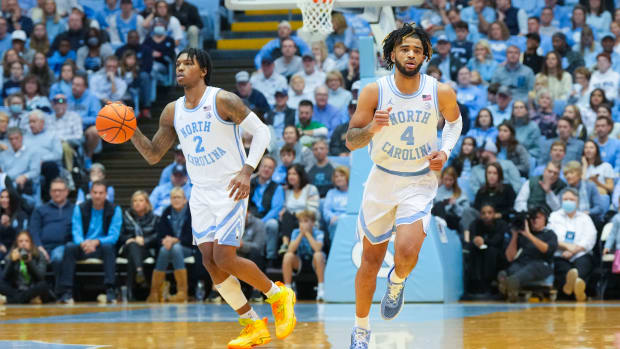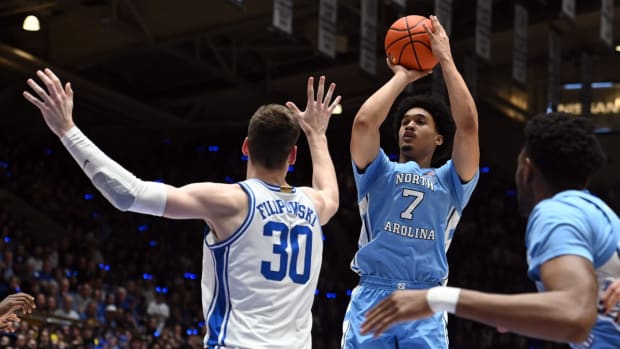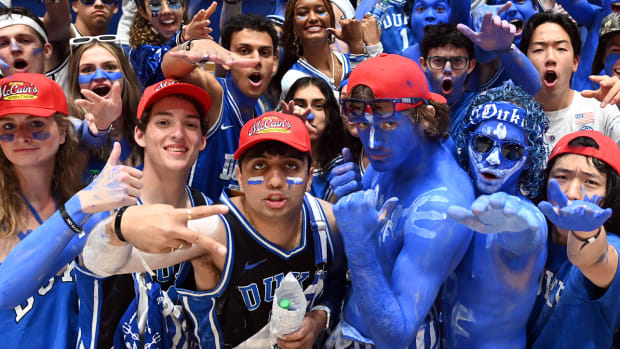College Basketball is Alive and Well
It has been a strong two weeks for college basketball.
On June 22, Cade Cunningham announced that he was keeping his commitment to Oklahoma State, despite the Cowboys’ impending postseason ban. A week later, on June 29, Emoni Bates verbally committed to Michigan State. Then, on Friday, July 3 Makur Maker announced his commitment to Howard University.
In an era where, according to many talking heads, every move by the NBA signals the end of college basketball, each of these commitments has pointed in the opposite direction.
Why so? We’ll get into that in just a minute.
But seriously, think about these different events and how convinced people were that college basketball was over:
Led by Kevin Garnett in 1995, a rash of players went straight from high school to the NBA. College basketball is finished.
The implementation of the one-and-done rule? No one will have programs anymore. Colleges will all be one-year finishing academies.
Brandon Jennings is going overseas? Oh no, all the top players are going to start choosing this route.
The newest perceived threat is the G-League’s revamped one-year development program.
Many fear this program will steal all the top talent from college. However, college basketball has faced these types of perils for years now and is doing just fine thank you very much. It seems the talk of the death of college basketball has once again been overblown.
A couple of reasons to not be terribly concerned with the G-League route.
First off, the G-League’s development program is more aimed at stopping top talent from going overseas rather than stealing players from the college ranks. Sure, they will poach a few would-be college-goers and the G-League will now be considered as an option for the best of the best, but as we’ve already seen college basketball will still attract plenty of talent.
Second, the G-League’s salary option is tantalizing for a high school student, but as Name, Image, and Likeness legislation becomes a reality, there will be financial incentive in college as well.
On top of that, a player can become a household name by going to college and playing in front of a national TV audience 30 or so times. The same would not be true of playing in the G-League. In the current state of things, to choose the G-League route is to isolate yourself for a year.
A recent example is Zion Williamson. By betting on himself and attending Duke for a year, he exponentially increased both his draft stock and earning power.
Back to Cunningham, Bates, and Maker.
For many, myself included, I assumed Cunningham was gone the moment the NCAA announced Oklahoma State’s postseason suspension. Perhaps to one-and-done juggernaut Kentucky. Perhaps to the G-League. But guess what? I’m not Cade Cunningham. He chose to stick with the people that had committed to him all along.
Despite being the number one player in the class of 2022 and the fist sophomore ever to win the Gatorade National Player of the Year award, Emoni Bates has not been heavily recruited. Why? Because it’s widely assumed that the NBA will begin allowing players to once again be drafted directly from high school and the prevailing idea is that that will be the route Bates chooses. However, Bates has held firm that he wants to go to college and has been disappointed that not many schools recruited him.
Maker, a five-star prospect for 2020, was deciding between Kentucky, UCLA, Memphis, and Howard. Howard?! Yes, Howard. But five-stars don’t go to HBCU’s (Historically Black Colleges & Universities). They do now.
Is it time to realize that we don’t give these young men enough credit? Perhaps so.
I will readily admit that I’m quick to assume that all top players care about is being part of the normal power structure. A one-year stop in Lexington. Going to the G-League or overseas to get paid. Jumping to the NBA as quick as humanly possible.
But then something like this two weeks happens and I’m reminded of the humanity of these young men. Cunningham sticking to a commitment, even if it means not participating in the NCAA Tournament. Bates following through on what he’s said all along he wanted to do. Maker choosing to attend a college that most top prospects wouldn’t typically even consider.
You know what? College basketball is resilient. College basketball is alive and well.
For today, thanks to the commitments of these three teenagers, I’m reminded that college basketball is going to be just fine.
You can follow us for future coverage by clicking “Follow” on the top right hand corner of the page.
Send Isaac Schade an email to talk more about this article.
Follow us on Twitter: @SI_Heels | @isaacschade
Please post any comments below!




